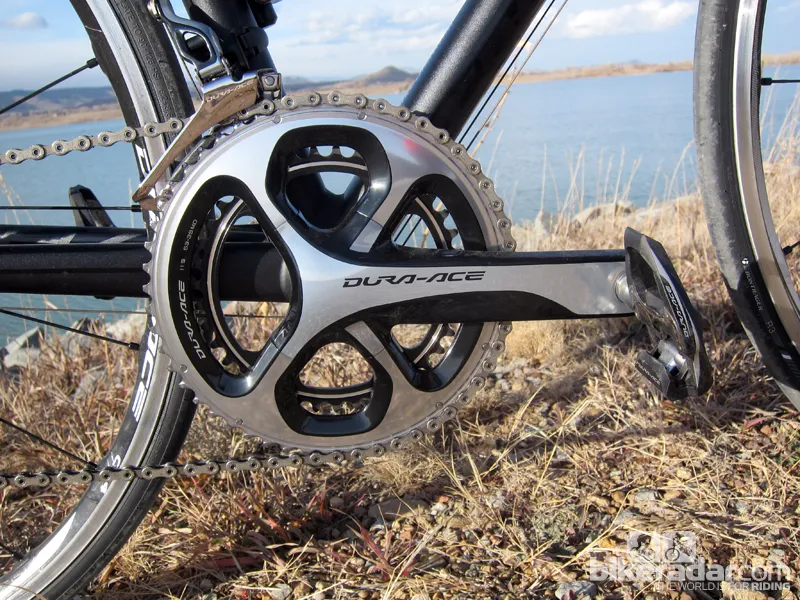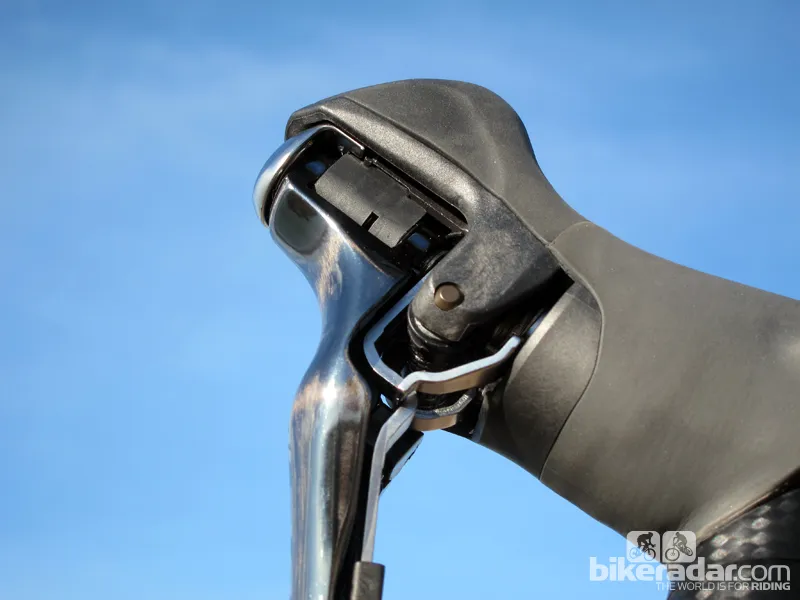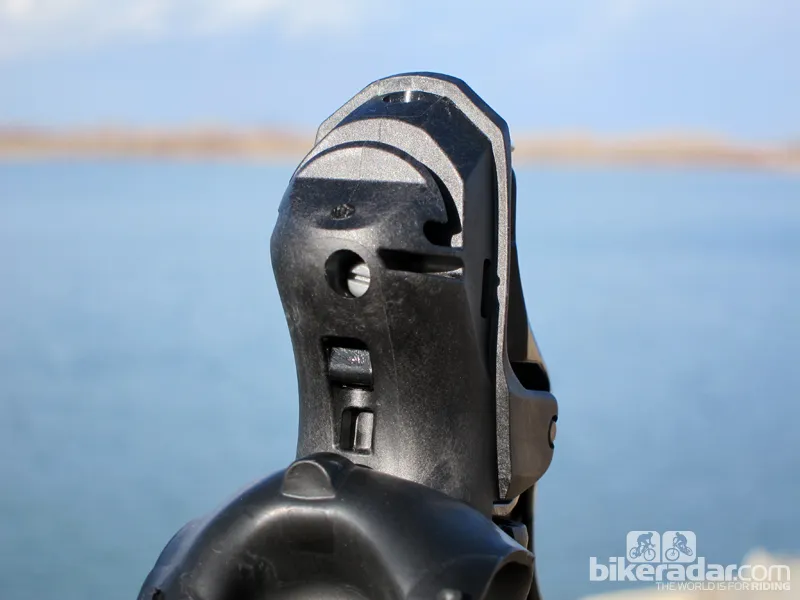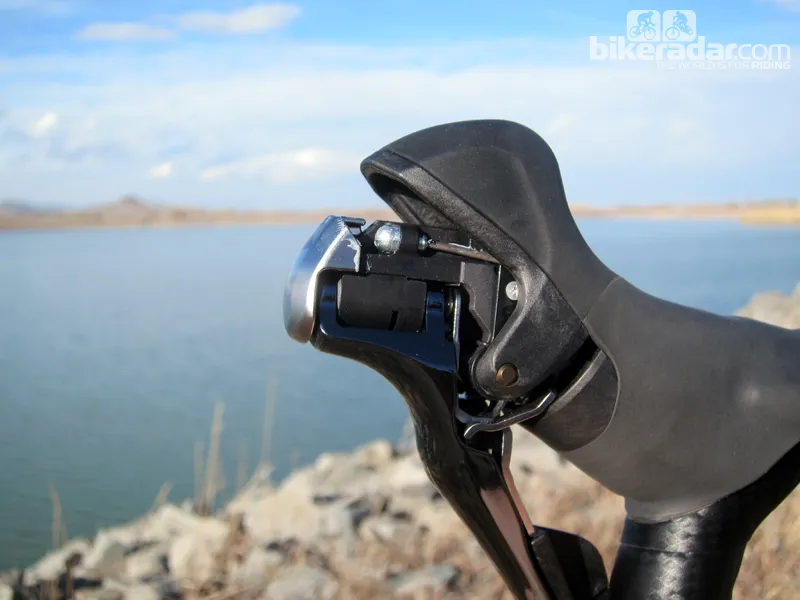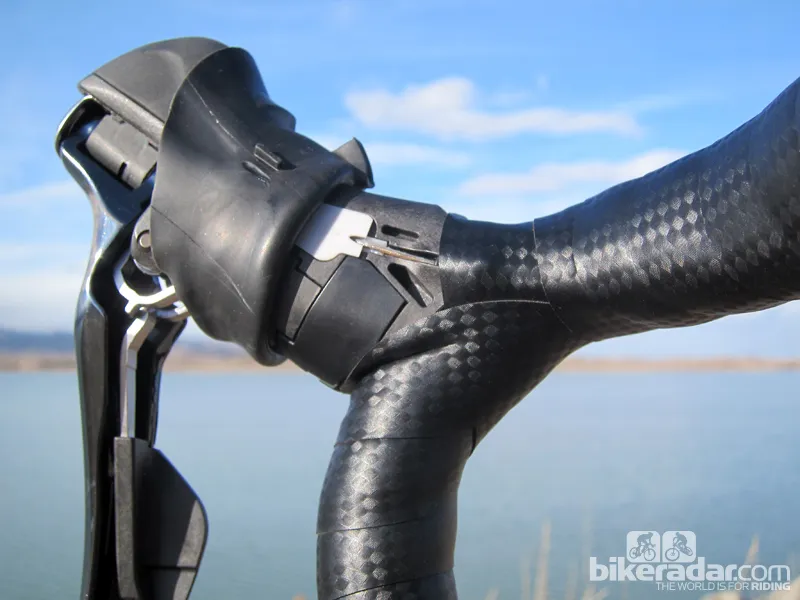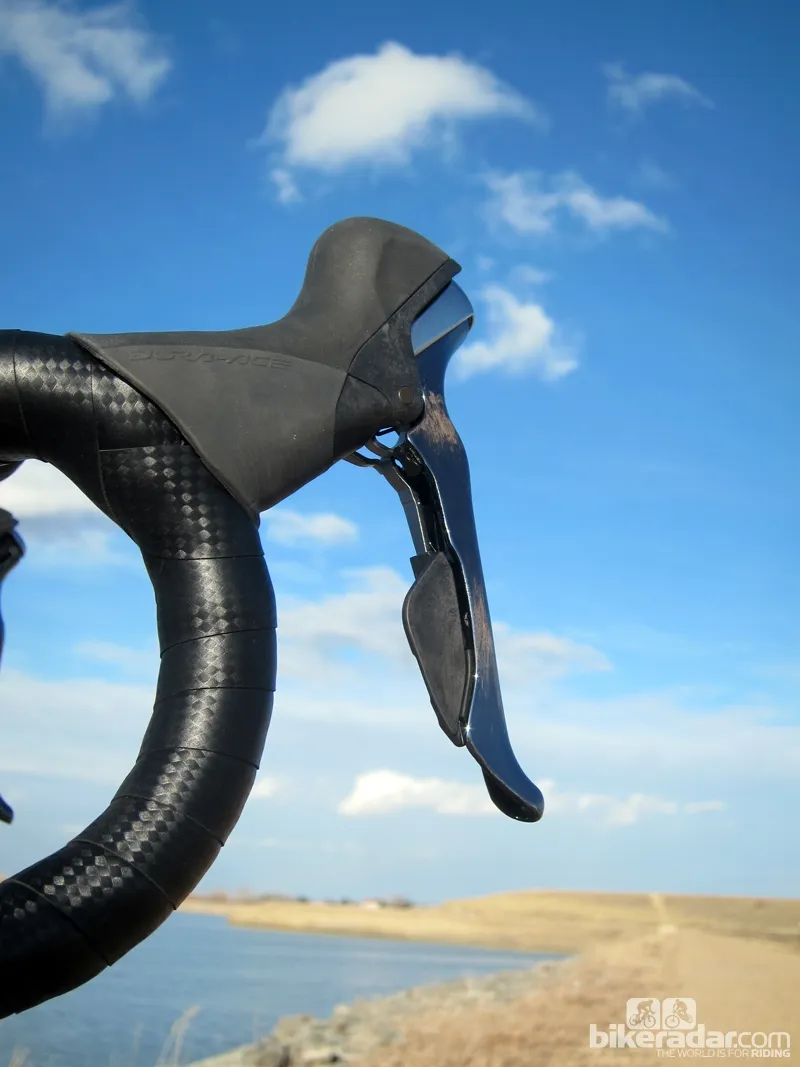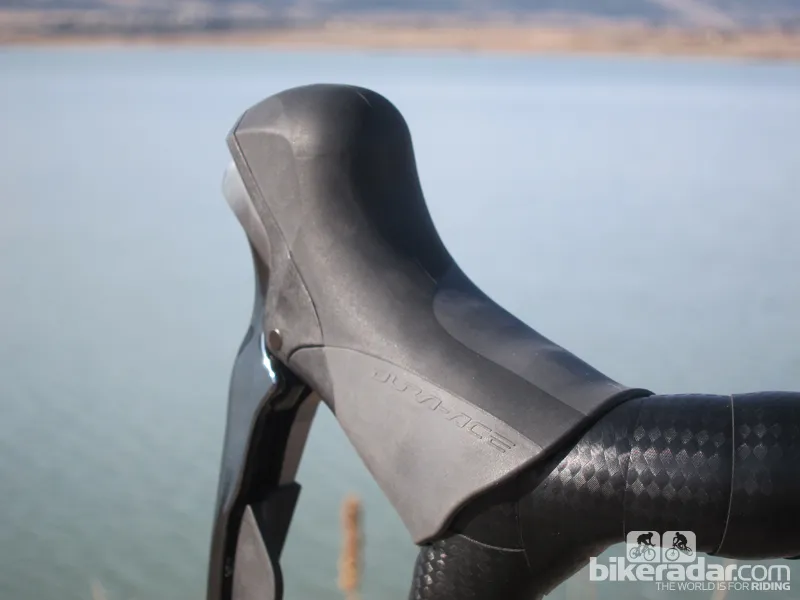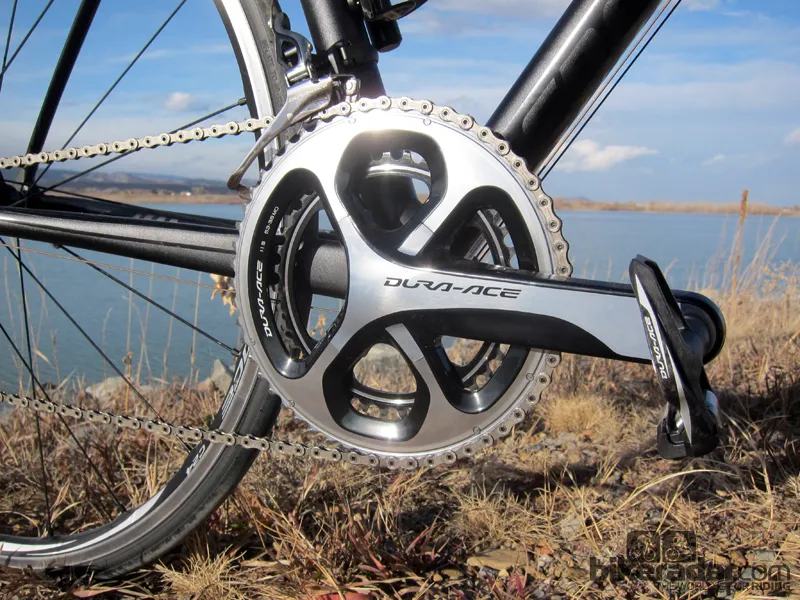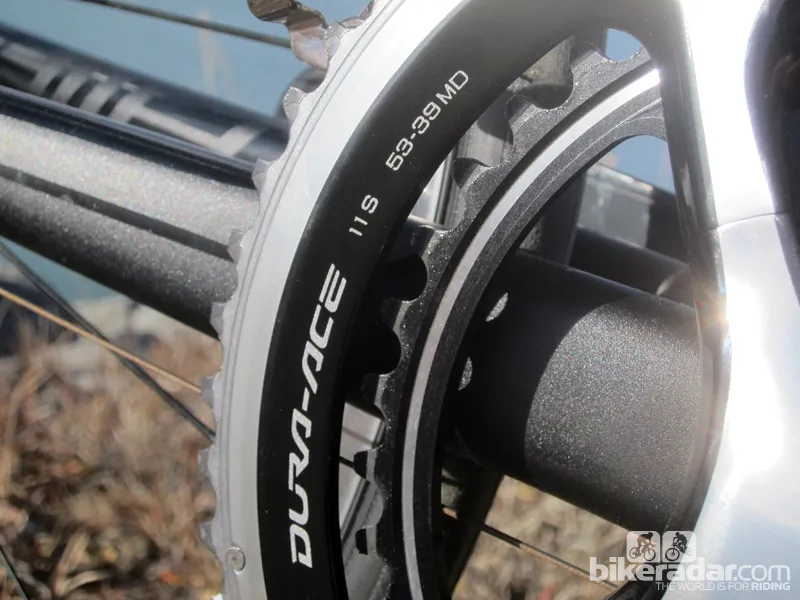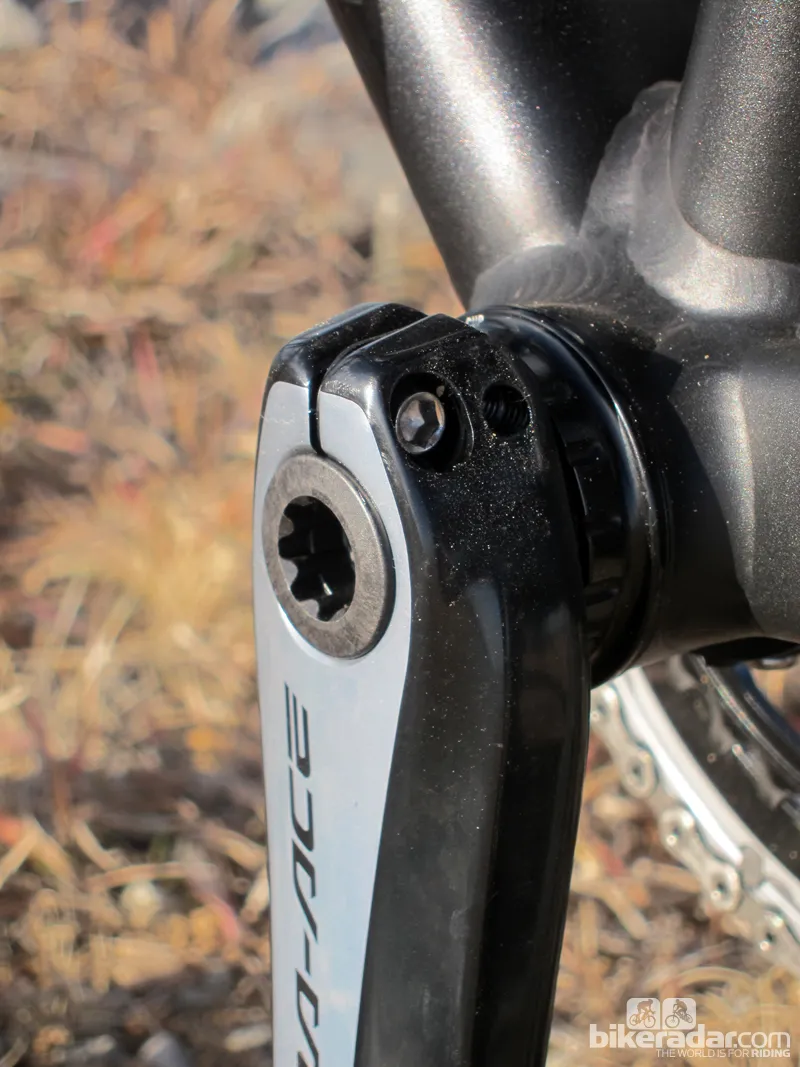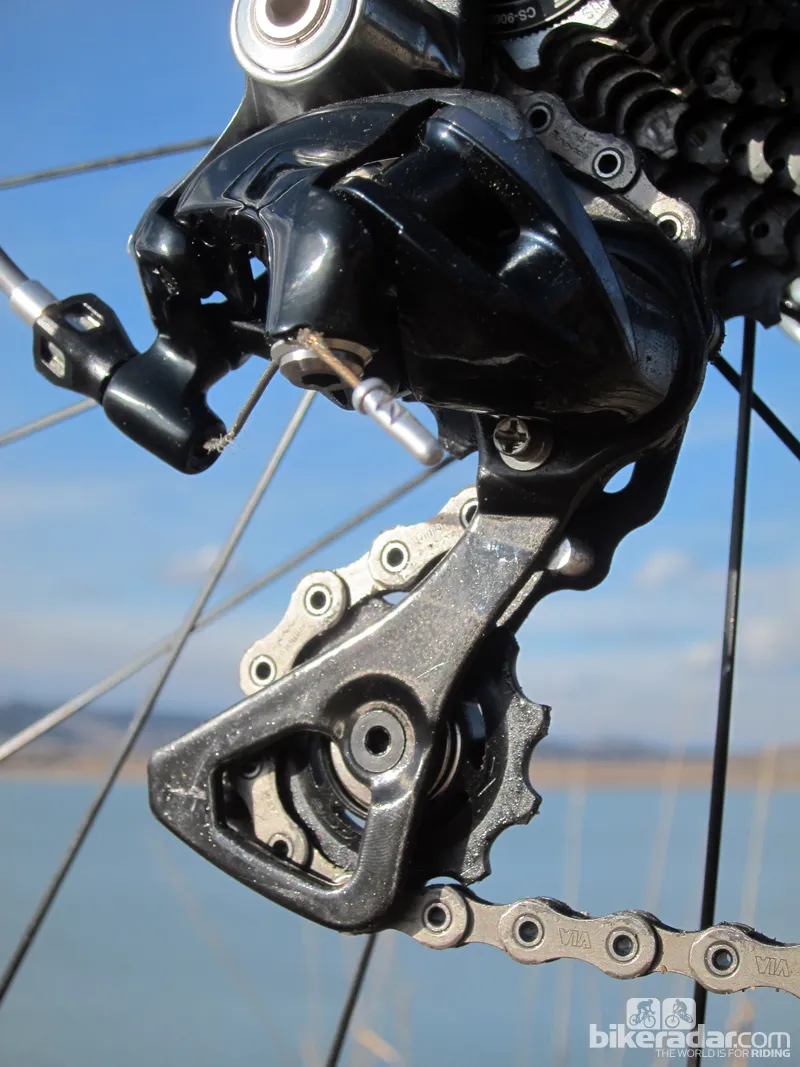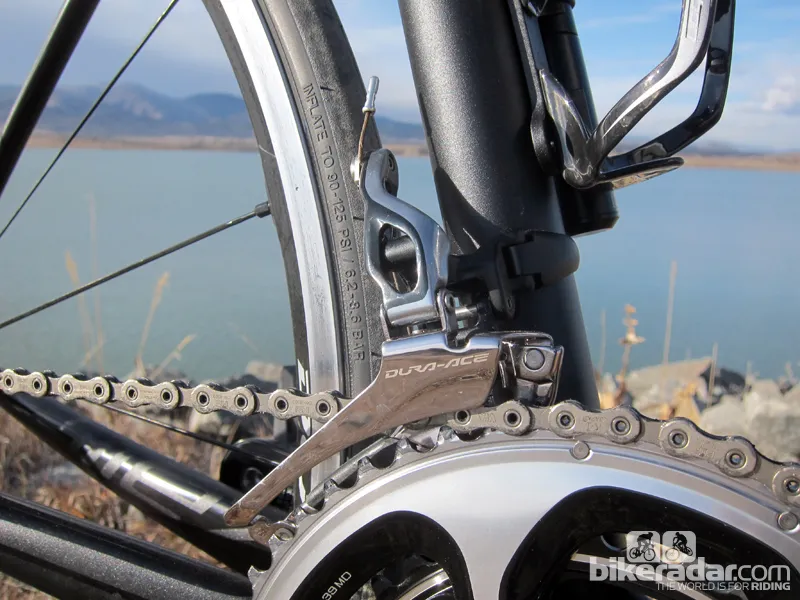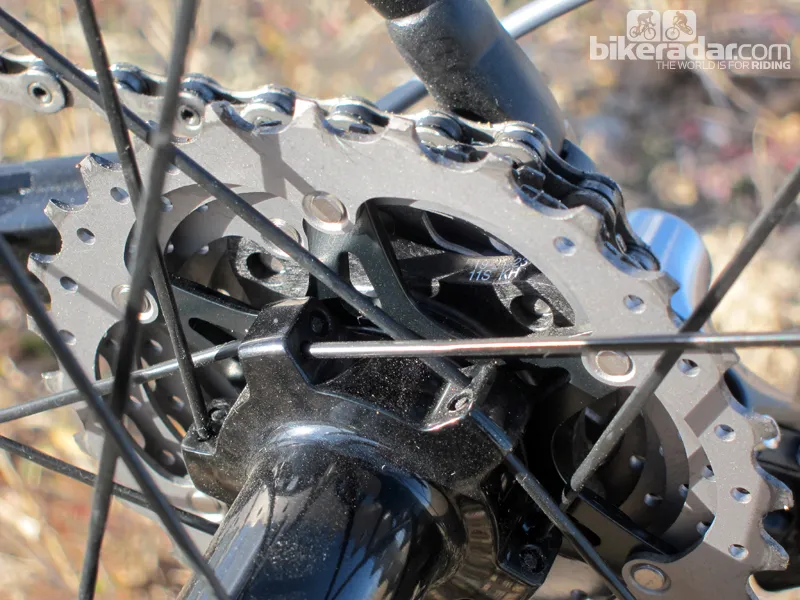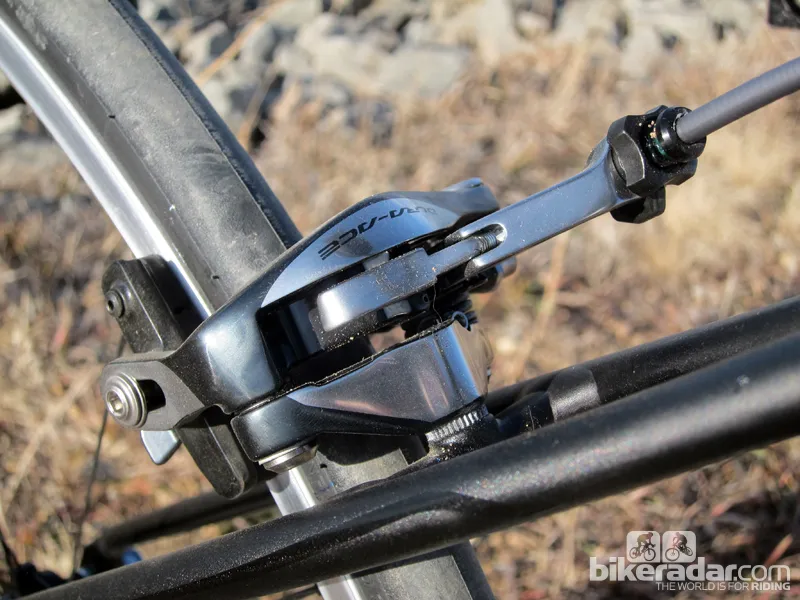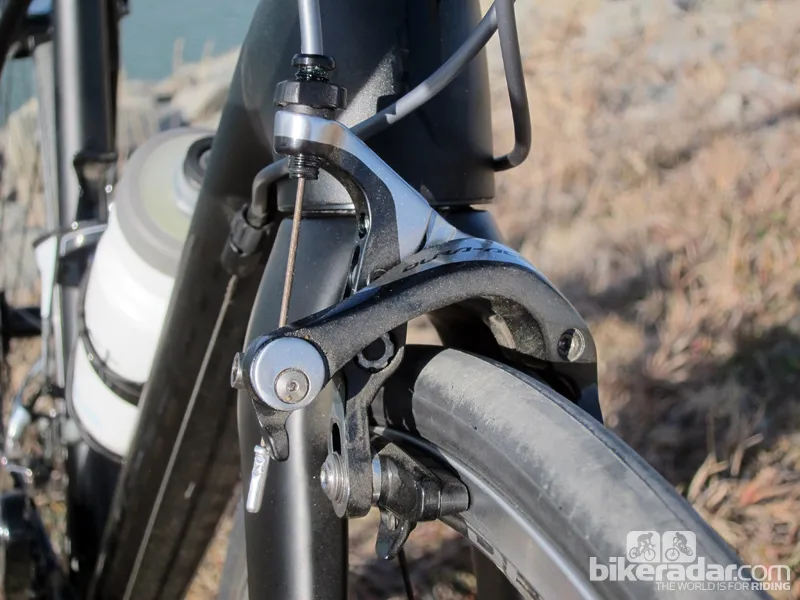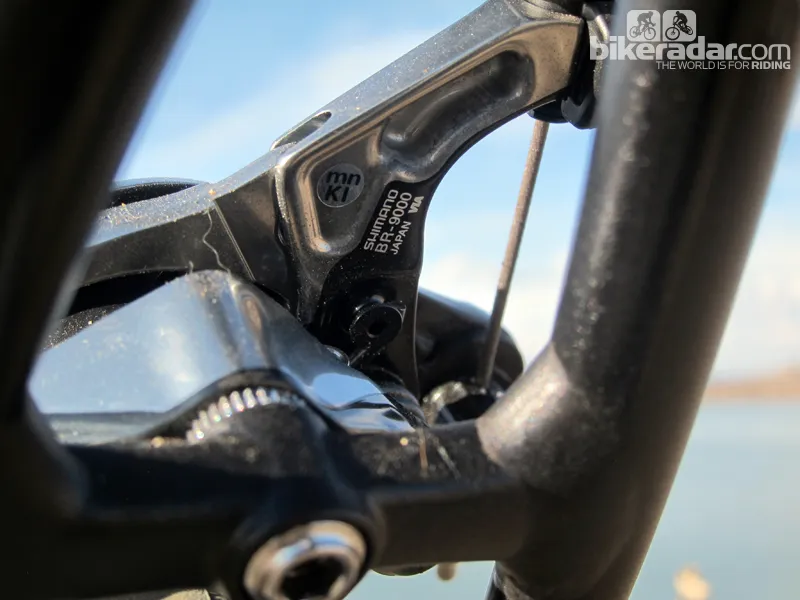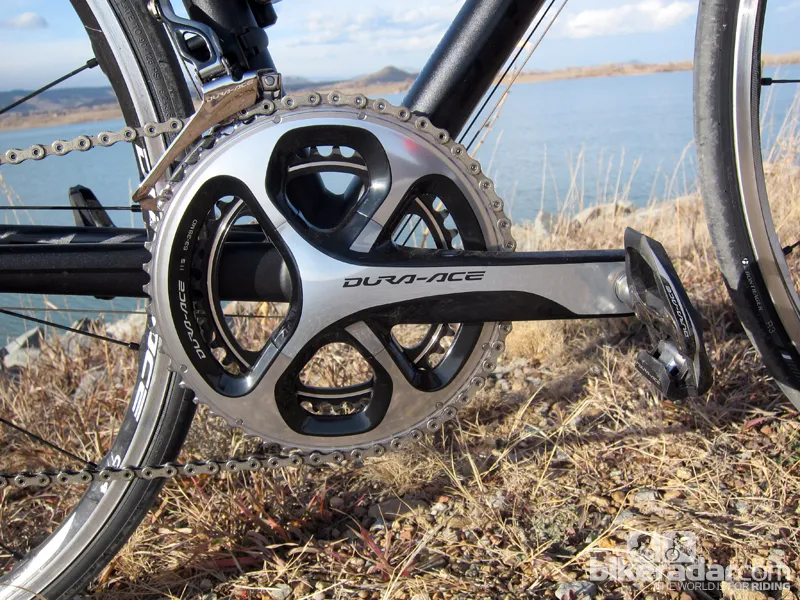Shimano took a big step with Dura-Ace 7900, but not necessarily one in the right direction. Fast forward to the new 2016g 11-speed, mechanical 9000 group, though, and all is forgiven. It works better, it feels better, it's quieter, it's faster, and it's smoother – it's just plain fantastic.
We've only logged a few rides on the new group, but so far every indication is that it's a home run. Ergonomics are on par with Di2, the shifter action has taken a page out of the XTR playbook, every motion is remarkably refined, and there's simply no question that 9000 was thoroughly engineered to work together.
In fact, it's so good that electronic transmission skeptics now have even less of a reason to switch over. Been holding out on 7900 or waiting for Shimano to redeem itself? Well, your day has come.
Shimano dura-ace 9000 review
Video: Shimano Dura-Ace 9000 guide
Picture perfect ergonomics
Shimano readily admits that 7900 wasn't an ideal lever body shape. A major goal on that group was to tuck the derailleur housing underneath the bar tape, but ultimately, the packaging required to do so yielded a bulky lever body.
Dura-Ace 9000's rearranged guts now give a lever shape that's highly reminiscent of Di2 and that Shimano deems virtually ideal. In general, we've found there's a more natural feel when you wrap your hands around the hoods. The bodies are more rounded and smaller in girth, the width is now more constant from rear to front, and the upper knob has actually grown a bit to lend a more secure grip when you're fully laid out.
Shimano has also moved the pivot point on the brake lever out a few millimeters, to improve leverage when you're on the hoods. The bigger, Di2-like inner shifter paddle is easier to find from the hoods or drops and, once again, the brake lever blades are canted slightly outboard so they fall more naturally at your fingertips.
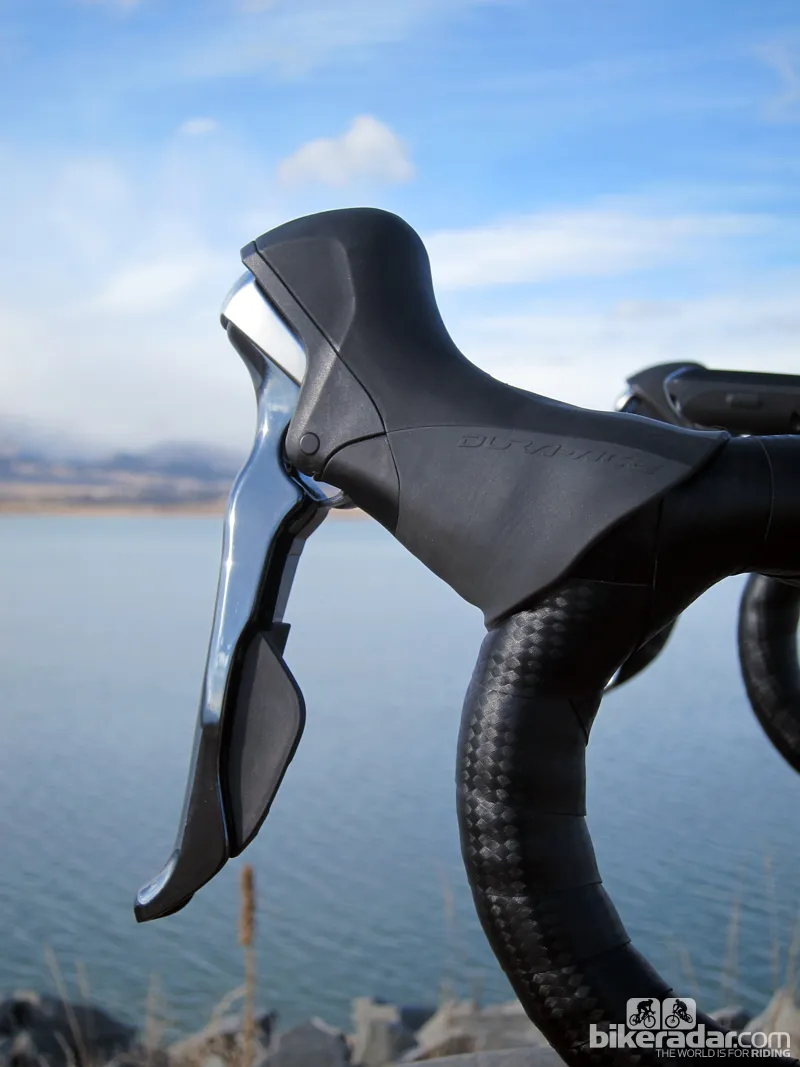
The new levers are sleek and organically shaped
Last year's dual derailleur housing routing has been abandoned in favor of an inboard-only layout. While this obviously provides less flexibility in terms of housing positioning, we think Shimano has made the right move – the outer edge is now perfectly smooth under your palms, with no harsh ridges to concentrate pressure.
Even last year's adjustable reach has been improved. There's still a plastic set screw hidden beneath the hoods but now shortening the reach doesn't create an ugly gap at the front of the lever.
Riders with bigger hands might miss 7900's more substantial, squared-off form. But everyone else will see a big improvement in every way.
Silky smooth shifts
Rear shifts are as seamless as ever – no surprise given that Shimano had virtually no room for improvement there. Even downshifts on steep climbs under full power are utterly reliable and smooth.
Thankfully, a full sweep of the main lever once again moves the chain across three cogs, not just two as with 7900. The total lever throw remains virtually unchanged. Upshifts are still done just one at a time, but at least that lever throw is substantially shorter, with the amount of free play cut roughly in half.
Many have questioned the need for yet another cassette cog and, yes, you don't need 11 gears back there. However, it allows for a wider range than 10-speed without making bigger jumps between gears or the same range with more steps in between. Have you been missing that 16T on your current 11-25T 7900 cassette (it's a common complaint)? Well, now you can have it back, or get a bonus 28T bailout gear at no extra charge.
While the new front derailleur's cable pull geometry and massive lever arm look rather odd, there's little debate that it works very well – front shifts are somehow even better than before. Interestingly, you now have to move the lever morethan with 7900, but you get a far lighter, silkier action. Truthfully, it's the most impeccably buttery movement from inner chainring to outer that we've experienced with a mechanical drivetrain.
There's certainly some wizardry going on in terms of chainring stiffness, shift ramps, and chain plate shaping here. But not to be ignored is Shimano's 180-degree reversal from 7900 in terms of trim. Whereas there were once two positions for the inner ring and just one for the outer, there are now two for both.

The 9000 rear derailleur features a new cable-pull geometry
Moreover, shifting down to the inner chainring now mimics Di2. The cage first moves over slightly to gently push the chain off the big ring – thus preventing a drop – and then you need to push the release lever again to move the cage to its innermost position.
It sounds far more complicated than it is, and we have mixed feelings on having to push the release lever twice to move the cage all the way over, particularly given SRAM's brilliant Yaw geometry on its latest Red front derailleur. However, the upsides are a narrower – and, thus, more precise – cage than 7900 and that aforementioned improvement in shift performance.
Dual-discipline riders who were hoping for XTR-like levels of tactile feedback in the new shifters might be a little disappointed – the clicks actually feel lighter than with 7900. That said, 9000 offers a notably more fluid action, with a more directly connected and lower-friction feel between lever and derailleur.
Aided in no small part by new cables that bear a special low-friction coating plus new, nosed ferrules, Shimano claims 43 percent less shift effort up front and 47 percent out back – and it feels like it. In fact, riders who are still on 7800 should feel right at home here, which is impressive given the inherently more convoluted routing required with tucking the cables underneath the tape.
Count us among those who would have preferred a little more feedback, a la Shimano's XTR off-road group, though – not to mention XTR's ability to upshift two gears per lever sweep – but it's an improvement nonetheless.
Quiet and efficient drivetrain
Shimano has never been a company to shy away from pushing boundaries and shunning established standards, and the new Dura-Ace 9000's four-arm crankset is clearly no exception. The radially asymmetrical design looks unusual but is more in keeping with a cyclist's non-constant power output. If anything, from an engineering standpoint, the conventional five-arm spider assumes a 100 percent perfect pedal stroke – something no rider can achieve.
Replacement chainrings will undoubtedly be very expensive, but at least there are no longer two separate bolt circle diameters to accommodate both compact and standard drivetrains. Just one will now do both, and given the hollow outer chainring's immense rigidity, there's seemingly no sacrifice in stiffness in doing so.
Speaking of which, BikeRadar can't comment with certainty on any change in crankarm stiffness just yet, as our test group is mounted on a new frameset we hadn't ridden before. That said, the forged aluminum arms have notably bigger and more rectangular cross-sections than before.
How much bigger, you ask? Crankarm thickness is essentially unchanged, but when measured at the midpoint the non-drive 9000 crankarm is more than 40mm deep. The 7900 one is just over 34mm – a jump of about 18 percent.
Crankarm construction also looks to have been redesigned from previous generations. Shimano has never disclosed how it manufactures hollow-forged aluminum crankarms but there's a visible bond line around the circumference on the back of both Dura-Ace 9000 arms, which strongly suggests a new two-piece technique. Whatever the method, it seems to work.
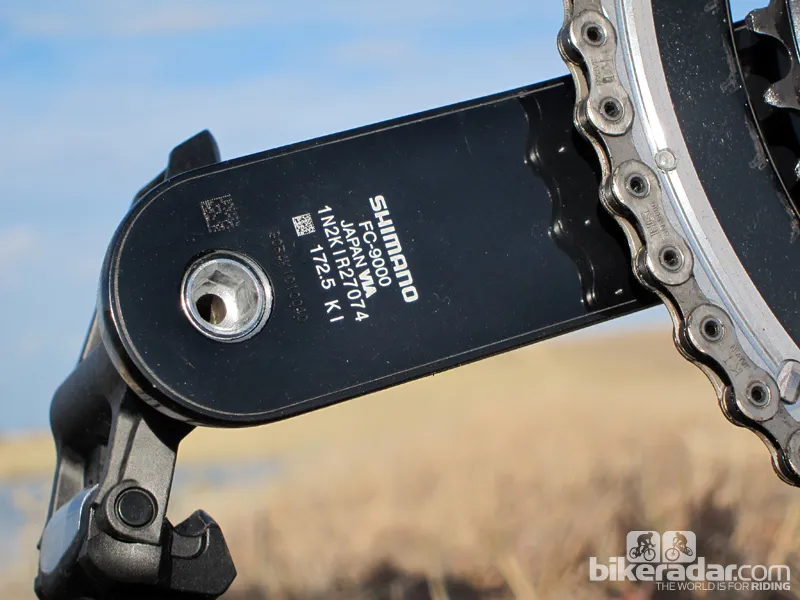
A bond line is clearly visible on the back of the 9000 crank arm
While the crankarms have got bigger, the bottom bracket bearings and cups have become smaller (old tools will work but only with an additional insert). According to Shimano, the new cartridges feature smaller ball bearings, but there are more of them and they're more tightly packed, shedding an appreciable amount of weight but increasing surface contact area for improved durability.
We'll have to take Shimano's word on that for now, though, as our current test rig is fitted with a Praxis BB30 conversion bottom bracket.
It's far too early to tell if the new 11-speed chain's PTFE coating will live up to Shimano's claims of 20 percent improved durability over the 7900 model, but one thing is certain: this sucker is quiet. The new Dura-Ace 9000 drivetrain spins with a barely perceptible hum and is impressively tolerant of cross-gearing, particularly when the factory chain treatment is still fresh.
Interestingly, the narrower chain also represents the single biggest weight decrease of any of the new Dura-Ace 9000 components compared to 7900. Shimano has also reverted back to a symmetrical design so the 9000 can't be installed backwards by mistake.
Aside from the additional cog, there's nothing tremendously groundbreaking with the new cassette relative to the 10-speed one, aside from the fact that Shimano has added a cog but maintained the weight. Credit goes to the more aggressive cog machining and the usual split titanium-and-steel cog materials but also the new use of a carbon spider for part of the cluster.
More braking control
Weight has creeped up just a hair relative to Dura-Ace 7900, and the new calipers are a touch bulkier too. While they're still essentially a dual-pivot design, the lever arms are now symmetrical for equal power at the rim, and there's an additional roller pivot in the center of the caliper – sort of like KCNC's calipers but with a tidier and more thoroughly engineered layout.
Shimano has also moved the brake lever pivot point about 5mm further away from the bar, for more leverage on the hoods. It's also added nearly 10mm of length to the lever blades, for leverage and an easier reach from the drops, particularly when the levers are clamped high on the bar.
Shimano claims a 20 percent boost in braking power, although apparently most of that is due to the new low-friction cable and housing. On our test rides we didn't notice the additional power as much as the better modulation, and there's less of a digital, on-or-off feel at the lever. You can still approach downhill corners with as much heat as before, but now you'll be able to scrub off exactly the amount of speed you want with even more confidence, without accidentally locking a wheel.

The lever arms are now symmetrical for even power on the rims
Just as we said with regard to electric drivetrains, Shimano's new rim brakes are so good that they counter the argument against disc brakes – at least in dry conditions and situations where prolonged braking and heat build-up aren't a concern.
We've yet to try the new direct mount option (exclusive to Trek's new Madone for now). However, keep in mind that that's a wholly different brake, not just a pared-down version of the standard calipers.
Compatibility
Given the move to an 11-speed rear end and the revamped front derailleur cable pull geometry, few will be surprised to hear that none of the new 9000's transmission parts will be backwards compatible with 7900. The brake lever cable pull remains constant, but we don't expect many buyers will go that far just to mismatch the levers and calipers.
The new cassette uses the same spline pattern and cog thickness as the latest 10-speed one. However, the spacing – and, therefore, the indexing – is different and the overall width is greater than before.
Some current Shimano/SRAM-compatible freehubs (such as Mavic) will accept the new 11-speed cassettes already and others (such as DT Swiss) can be retrofitted with new bodies. However, some wheels just won't be adaptable, so keep that in mind if you're looking to upgrade.
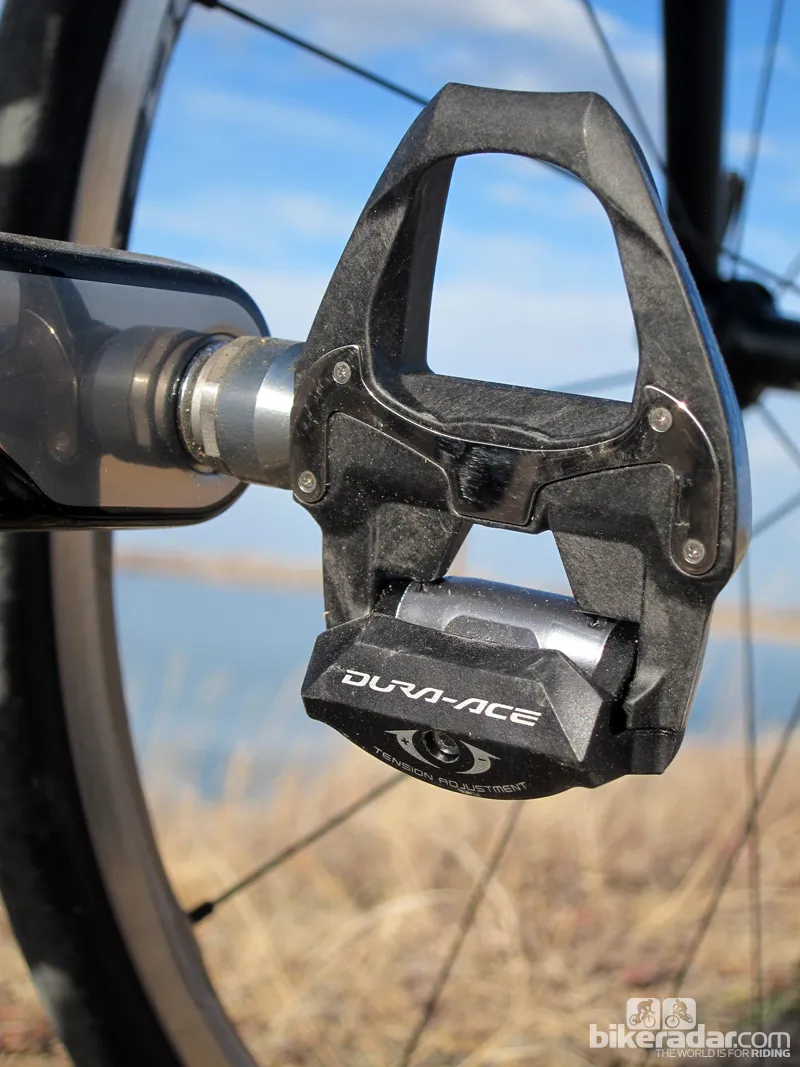
The pedals are essentially unchanged from the previous version
Future implications
If you haven't picked up on this already, we'll reiterate just to hammer the message home: the new Shimano Dura-Ace 9000 mechanical group is outstanding, and arguably what 7900 should have been all along. It's a little less raw and visceral than SRAM's latest Red (not to mention about 150g heavier) and perhaps highly refined enough to feel a little less connected than Campagnolo.
But it's virtually perfect in terms of pure function, with seemingly every movement engineered to within an inch of its life. Heck, we'd argue the brilliantly polished two-tone finish even looks more upscale than before.
Pricing
Array
Those of you with more realistic budgets – in other words, just about all of us – shouldn't be resentful that the new Dura-Ace is so expensive. It is a flagship set, after all, and one that’s meant to showcase the best Shimano has to offer. Plus, pricing hasn't changed from 7900 despite the improvements.
Instead, keep this in mind: while the current Ultegra and 105 groups carried over the same missteps as Dura-Ace 7900, the next-generation groups – which may come as early as late 2013 – will bring similar advancements as Dura-Ace 9000 but with modest weight penalties and far more attainable prices.
For more information, see the Shimano website.
